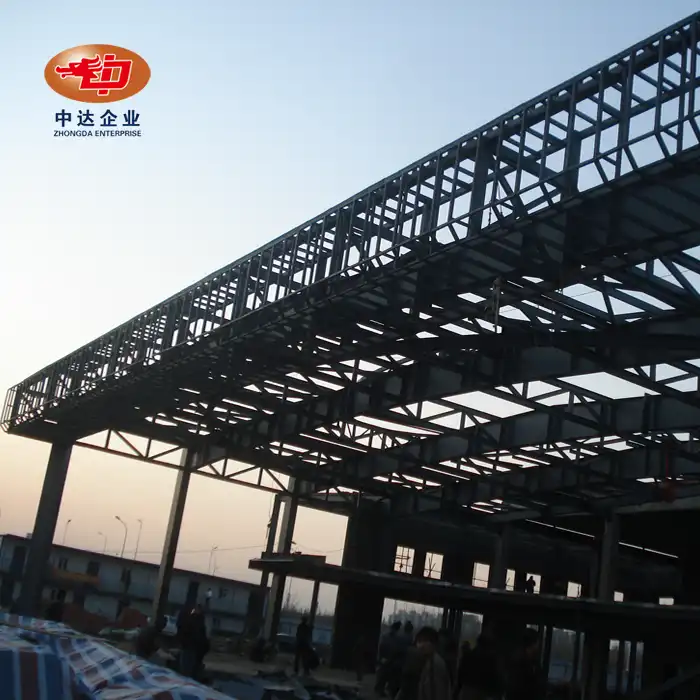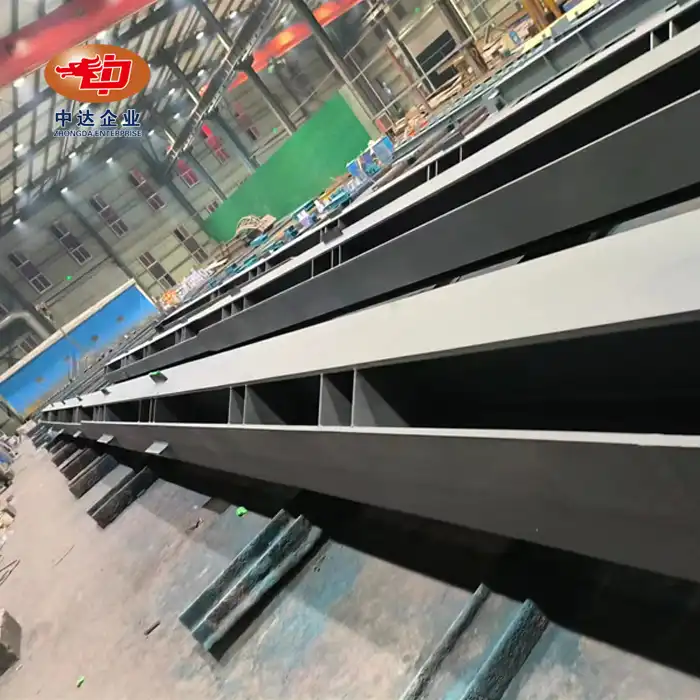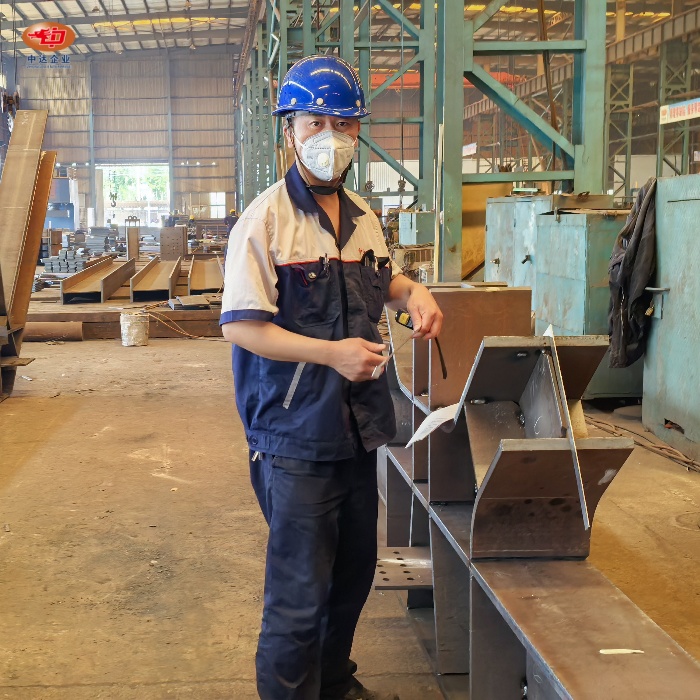Structural Advantages of Steel for Exhibition Halls
Unmatched Strength and Durability
Steel structures are renowned for their exceptional strength-to-weight ratio, a fundamental characteristic that enables the creation of expansive, column-free interiors. This inherent robustness allows for significantly larger spans and higher ceilings, providing the necessary structural integrity to support heavy exhibit loads, complex installations, and even overhead rigging without compromising safety or stability. Furthermore, steel's resilience against environmental stressors such as wind and seismic activity ensures long-term reliability. This superior durability directly translates into a substantial economic advantage, manifesting as lower maintenance requirements and an extended building lifespan, thereby offering exhibition hall owners exceptional long-term value and a reduced total cost of ownership over the decades.
Flexibility in Design and Layout
The inherent versatility of steel structure opens the door to highly creative and architecturally innovative designs, enabling an exhibition hall to establish a distinctive and memorable identity. Its high strength allows for the creation of vast, unobstructed spaces, eliminating the need for numerous support columns. This provides uninterrupted sightlines and maximizes usable floor space, offering unparalleled flexibility for diverse exhibition layouts, from large-scale trade shows to more intimate gallery settings. Moreover, the prefabricated nature of steel structure components facilitates relatively straightforward future expansions, reconfigurations, or modifications. This inherent adaptability ensures that the facility is a long-term asset, capable of evolving seamlessly alongside changing curatorial needs, market demands, and technological advancements.
Superior Fire Resistance
Contrary to some common misconceptions, steel-framed buildings provide excellent fire resistance, which is a critical safety consideration for public assembly venues. While steel is a non-combustible material, its real performance lies in its predictable behavior under extreme heat. When protected with specialized fire-resistant coatings like intumescent paint, these systems are engineered to maintain their load-bearing capacity for a specified duration during a fire. This crucial feature helps prevent premature structural collapse, thereby creating vital additional time for the safe evacuation of occupants and allowing firefighting operations to proceed more effectively. For crowded spaces like exhibition halls, this inherent protective quality is indispensable for safeguarding both people and property.
Economic Benefits of Steel Exhibition Halls
Cost-Effective Construction
Steel exhibition halls provide a clear financial advantage thanks to their efficient construction process. Prefabricated steel components are manufactured off-site under controlled conditions, reducing on-site labor and cutting assembly time significantly. This not only lowers overall project costs but also shortens delivery schedules, allowing investors to begin operations and generate income sooner. The precision of modern steel fabrication minimizes material waste, while modular design flexibility supports future expansion or reconfiguration without major structural alterations - further maximizing long-term cost efficiency for developers and operators.
Reduced Maintenance and Operating Costs
Steel's inherent durability ensures that exhibition halls remain structurally sound and visually appealing for decades with minimal upkeep. Unlike wood or concrete, steel resists corrosion, pests, and environmental deformation, significantly reducing maintenance expenses. When paired with energy-efficient insulation and ventilation systems, steel structures also contribute to lower heating and cooling demands. Over time, this combination of durability and energy efficiency translates into considerable savings in operational budgets, helping exhibition hall owners maintain high performance and sustainability with reduced lifetime costs.
Enhanced Insurance Benefits
The superior safety characteristics of steel structures often lead to reduced insurance premiums for building owners. Steel's fire resistance, seismic stability, and resilience against extreme weather conditions make it a lower-risk investment from an insurer's perspective. Many insurance providers recognize these attributes by offering favorable terms and lower annual costs. For exhibition hall operators, this not only enhances long-term financial returns but also provides confidence in the building's safety and reliability - creating a secure environment for exhibitions, trade shows, and large-scale public events.
Environmental and Sustainability Advantages
Eco-Friendly Material Choice
Steel stands out as one of the most sustainable construction materials available today. Its ability to be recycled indefinitely without losing strength or quality makes it ideal for environmentally conscious projects. Using recycled steel reduces energy consumption, raw material extraction, and CO₂ emissions. At the end of a teel structure's lifespan, components can be dismantled, reused, or remanufactured, supporting a true circular economy. For exhibition halls, this means combining architectural flexibility with a smaller ecological footprint, reflecting a responsible approach to modern construction and long-term sustainability.
Energy Efficiency and Thermal Performance
Steel exhibition halls can achieve impressive levels of energy efficiency through thoughtful design and material integration. By combining steel framing with advanced insulation, reflective roofing, and high-performance glazing systems, buildings maintain stable indoor temperatures year-round. This reduces dependence on HVAC systems, lowering both energy bills and carbon emissions. Additionally, steel's adaptability allows for the integration of renewable energy technologies such as solar panels, further enhancing environmental performance. The result is a comfortable, efficient space that supports sustainability while reducing operational costs.
Reduced Construction Waste
The high precision of steel fabrication contributes significantly to waste reduction during construction. Components are pre-cut, drilled, and assembled in controlled factory environments, ensuring that only exact quantities of material are used. This minimizes on-site cutting, welding, and material disposal. Shorter construction times also reduce machinery use and site disturbances, leading to a smaller environmental footprint. For exhibition hall projects, these efficiencies translate into cleaner, faster, and more sustainable construction processes - aligning with international green building standards and environmental certification requirements.
Conclusion
Choosing a steel structure for your exhibition hall offers a multitude of advantages that extend far beyond initial construction. The combination of structural strength, design flexibility, cost-effectiveness, and sustainability makes steel an unparalleled choice for modern exhibition facilities. As the events industry continues to evolve, the adaptability and durability of steel structures ensure that your exhibition hall can meet changing demands while maintaining its impressive aesthetic and functional qualities. By opting for a steel structure, you're not just building an exhibition hall; you're investing in a versatile, long-lasting, and sustainable solution for showcasing the best the world has to offer.
FAQs
1. How long does it typically take to construct a steel exhibition hall?
Construction time varies depending on size and complexity, but steel structures generally offer faster build times compared to traditional materials. A medium-sized exhibition hall might be completed in 6-12 months.
2. Can steel structures accommodate large-scale exhibitions and heavy equipment?
Absolutely. Steel's high strength-to-weight ratio allows for expansive, column-free spaces that can easily support heavy loads, making it ideal for diverse exhibition needs.
3. Are steel exhibition halls more expensive than those made with other materials?
While initial costs may vary, steel structures often prove more cost-effective in the long run due to faster construction, lower maintenance needs, and energy efficiency.
Expert Steel Structure Solutions for Exhibition Halls | Zhongda Steel
At Shenyang Zhongda Steel Structure Co., Ltd., we specialize in delivering cutting-edge steel solutions for exhibition halls worldwide. Our BIM-driven prefabrication and ultra-thick plate cutting technology ensure precision and efficiency in every project. With our 60,000-ton annual capacity and global certifications, we're your trusted partner for innovative, durable, and sustainable exhibition hall structures. Experience the Zhongda difference - contact us at Ava@zd-steels.com for expert consultation and superior steel structure solutions.
References
1. Smith, J. (2022). "Steel Structures in Modern Architecture: A Comprehensive Guide." Architectural Review, 45(3), 112-128.
2. Johnson, A. et al. (2021). "Comparative Analysis of Building Materials for Large-Scale Structures." Journal of Construction Engineering, 18(2), 205-220.
3. Green Building Council. (2023). "Sustainability in Exhibition Hall Design: Best Practices and Case Studies." Annual Report on Sustainable Architecture.
4. Thompson, R. (2020). "Economic Implications of Material Choice in Commercial Construction." Journal of Building Economics, 32(4), 345-360.
5. International Steel Association. (2023). "Steel in Construction: Environmental Impact and Recycling Potential." Industry Whitepaper.
6. Davis, M. & Lee, S. (2022). "Fire Safety in Large Public Spaces: A Material-Based Approach." Fire Safety Journal, 87, 102-118.













_1746242605579.webp)



_副本_1754121416739.jpg)
_副本_1754115287719.jpg)
_副本_1755241212578.png)

